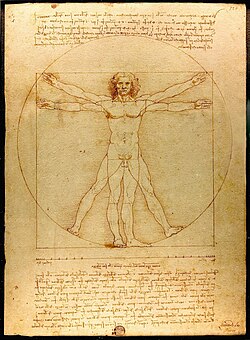Human scale
Buildings scaled to human physical capabilities have steps, doorways, railings, work surfaces, seating, shelves, fixtures, walking distances, and other features that fit well to the average person.
The fields of human perception systems, like perceptual psychology and cognitive psychology, are not exact sciences, because human information processing is not a purely physical act, and because perception is affected by cultural factors, personal preferences, experiences, and expectations.
So human scale in architecture can also describe buildings with sightlines, acoustic properties, task lighting, ambient lighting, and spatial grammar that fit well with human senses.
However, one important caveat is that human perceptions are always going to be less predictable and less measurable than physical dimensions.
Weights and measures tend to reflect human scale, and many older systems of measurement featured units based directly on the dimensions of the body, such as the foot and the cubit.

